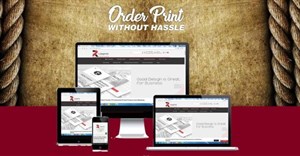Managed print services offer print cost control

This is according to Simbo Ntshinka, MD of Itec Tiyende, who says that he expects to see MPS to start gaining traction in the public sector, as organisations look for ways to take control of print costs in the context of pressurised budgets and demands from citizens for better service.
He says that office automation is one area of infrastructure neglected by even the most technologically advanced government departments in their IT overhaul and optimisation drives.
That means most government departments have document output infrastructures made up of a costly patchwork of different models and service contracts from multiple suppliers. They also have little insight into print costs and service levels, with costs spiralling out of control as a result.
MPS is a way for them to take charge of printing costs and device up time, so that they can improve productivity. In this approach to document management, the government entity outsources the running, management and optimisation of office automation services such as printing, copying and scanning to an external company.
The government department or agency no longer needs to own the print fleet. Instead, it will pay the service provider a per-page or per-month fee for taking responsibility for running its office automation infrastructure, creating good benefits.
"Under the Public Finance Management Act, government departments are encouraged to enter private-public partners where it can help to save money and enhance risk management. In the case of MPS, government departments can shift the costs and risks of print and copy infrastructure off their books by outsourcing it to a third party."
Rationalisation
For government departments with ageing printers, copiers and MFPs sourced from multiple suppliers, MPS offer a way to start rationalising and centralising redundant infrastructure, replacing it with devices that are more modern.
This can deliver immediate cost-savings by reducing electricity, maintenance, consumables and other costs, he adds. The immediate impact of a well-managed transition to MPS should be a reduction of 20% to 30% in the total cost of running the print and copy infrastructure.
In addition, MPS can enable government departments to gain visibility into print costs and control them better, he adds. A good MPS provider will have the skills and tools to help audit costs of a document output environment and then track and manage them over time. With this information, departments will be able to make more accurate expense forecasts and allocations.
For example, MPS providers will be able to track how employees are using the print and copy resources they have access to. Organisations can also give users permissions that determine who may print and what they may print, so that users cannot squander resources making colour prints, for instance. This means that personal or wasteful printing can be significantly reduced, which can result in substantial savings.
Another benefit lies in the sophisticated tools that MPS providers have to proactively monitor infrastructure and address potential problems before they cause downtime.
Further benefits come from freeing up IT, financial and procurement resources that were once focusing on managing the document output environment. Rather than worrying about document output, government can direct its energies to transforming business processes to improve service delivery, he concludes.












